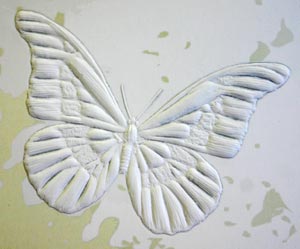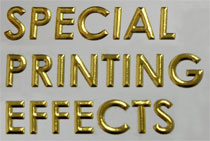What is embossing?

Blind embossing sample
Embossing is the process of using male and female etched dies (typically made of magnesium, brass or copper) and heat to raise or push letters or a design above the surface of a sheet of paper; it creates an eye-catching three-dimensional effect. The embossing die is made with a reversed image of the design. When this process creates an indented image, it is know as debossing. Computer controlled milling machines or hand sculptured engraving are used to convert the graphic image to the metal embossing die. A good example of embossing that many of us have seen (and felt) is a notarized document. Embossed pieces can be used without ink or foil (known as blind embossing), or with ink or foil such as gold, silver or many other colors, adding another distinctive and visually appealing element to the embossed piece.
How to use Embossing
Embossing is a technique that's perfect for adding a touch of class and individuality to your printed piece. It works well on many types of printing products, including:
Business cards
Letterhead and envelopes
Presentation folders
Rack cards
Brochures
Invitations
Certificates
Greeting Cards

Embossing with foil stamping
Many elements and images in your design can be embossed, including text. The most effective embossed pieces use a detailed die and heavier paper stock to highlight the depth and detail of the embossed graphics or images. Also, with the addition of colored metallic foil stamping as shown in this image, the emboss really stands out, both literally and visually. It is a great way to draw out and highlight important details, such as names, designs or logos. A combination embossing die and foil stamping die is needed for this process.